Bias tape is most often used to finish the edges of garments, especially along curved edges like armholes and necklines. But it can also be used as a decorative element on garments (think pockets and hems for example) or on other projects, like handbags, quilts, table runners and Christmas stockings. You can purchase packaged bias tape, but it’s very easy to make your own with a Bias Tape Maker tool. This short video will show you how easy is it to DIY your own bias tape.
~© ASG: Thank you to Sheryl Belson, ASG Plano Chapter





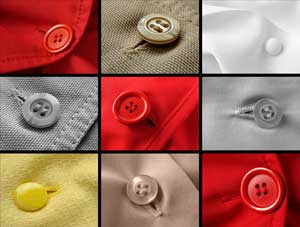 Button and buttonhole placements can sometimes be confusing. If the button and buttonhole are placed incorrectly, the garment may be too tight, too loose, or create gaping. The number of buttons on the garment is suggested on your pattern envelope, but it’s up to your personal preference or need. A good guide to start placing your buttons vertically is to keep in mind your body’s pressure points. Pressure points are where your body may put strain on the garment and may be your bust, belly, or even the hip if you are making a button front dress or skirt.
Button and buttonhole placements can sometimes be confusing. If the button and buttonhole are placed incorrectly, the garment may be too tight, too loose, or create gaping. The number of buttons on the garment is suggested on your pattern envelope, but it’s up to your personal preference or need. A good guide to start placing your buttons vertically is to keep in mind your body’s pressure points. Pressure points are where your body may put strain on the garment and may be your bust, belly, or even the hip if you are making a button front dress or skirt.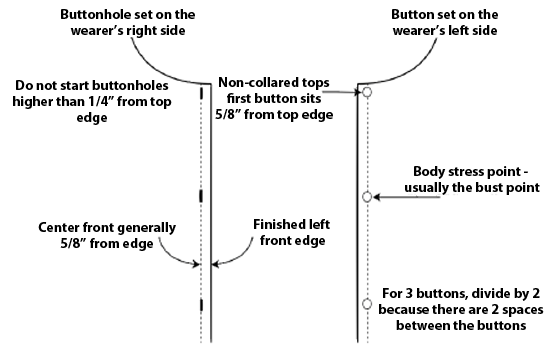
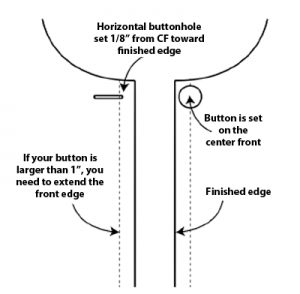
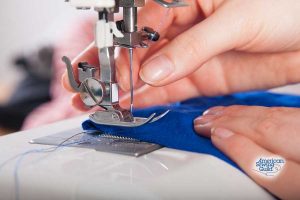 Batik: Flat fell seam or sew with a plain seam and serge together
Batik: Flat fell seam or sew with a plain seam and serge together


 Janet continued, “During the years I was conducting my sewing production business, I would often accompany Margaret when she was invited to teach at trade shows and special events. Her style of teaching was enthusiastic and engaging and I always try to carry on that tradition. When Margaret retired, she asked me to continue her mission to teach home sewers that sewing can be more fun, faster and better, than they know. What an honor and a pleasure for me to share all of her special information and now some of my own, with other sewers. I am one of the lucky ones who work at what we love; and, therefore, it doesn’t even seem like work, more like play. When I share this information I can see it in the eyes of the students how excited and happy they are to know a better way to sew. I cannot imagine enjoying anything more, and I feel so blessed to be on this mission, all I can say is: I want to teach the world to sew!”
Janet continued, “During the years I was conducting my sewing production business, I would often accompany Margaret when she was invited to teach at trade shows and special events. Her style of teaching was enthusiastic and engaging and I always try to carry on that tradition. When Margaret retired, she asked me to continue her mission to teach home sewers that sewing can be more fun, faster and better, than they know. What an honor and a pleasure for me to share all of her special information and now some of my own, with other sewers. I am one of the lucky ones who work at what we love; and, therefore, it doesn’t even seem like work, more like play. When I share this information I can see it in the eyes of the students how excited and happy they are to know a better way to sew. I cannot imagine enjoying anything more, and I feel so blessed to be on this mission, all I can say is: I want to teach the world to sew!”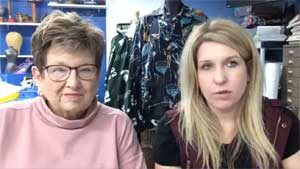 While Janet does the sewing demonstration, Jessica is hard at work monitoring comments and questions from viewers. The excellent visual quality gives viewers a great opportunity to not only see exactly how the construction should be done, but also the ability to ask questions in real time. And if you miss the live show, don’t despair, Janet has all episodes archived on the Facebook page and there is even a searchable directory now. For the archived list of episodes, go to her website
While Janet does the sewing demonstration, Jessica is hard at work monitoring comments and questions from viewers. The excellent visual quality gives viewers a great opportunity to not only see exactly how the construction should be done, but also the ability to ask questions in real time. And if you miss the live show, don’t despair, Janet has all episodes archived on the Facebook page and there is even a searchable directory now. For the archived list of episodes, go to her website 
